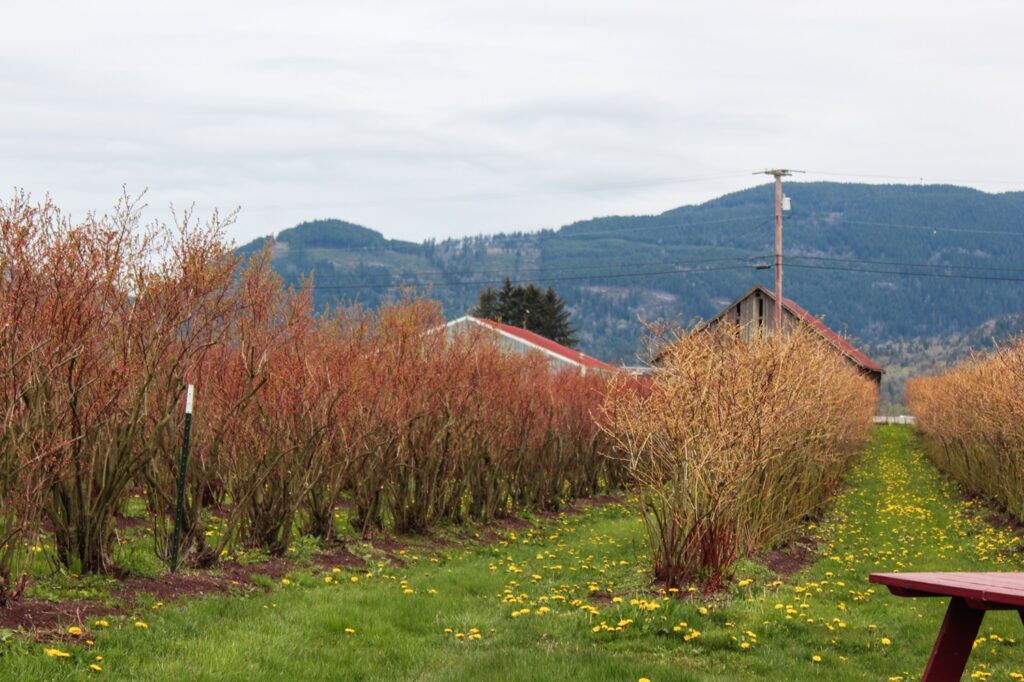Planting for Agroforestry
Perennial plants need a different approach from traditional crops.
Once you have conducted site assessments, selected your desired crops, planned your planting layout, and sourced plant materials, you will be ready to plant. Planting trees and shrubs should be done when plants are dormant (late November to early March). Below are considerations for how to plant your agroforestry system.
Site Preparation
Prepare sites for planting in the fall (late September through October). Avoid site preparation in wet/ponded areas, or immediately before flooding/ponding during wet season.
Set your plantings up for success by considering the approach to site preparation that works best for your farming operation:
Direct planting
Planting directly into grass may be necessary if you are using a scattered or food forest planting design. Trees and shrubs will begin to shade out grass over time and grasses can offer a form of weed suppression. It can be easier to mow or brush cut grass than battle other weeds that may opportunistically thrive if you remove grasses. The exception to this is the presence of reed canary grass. This highly invasive grass will make survivability of your new planting difficult.
Tilling
Tilling is a good option if you are planting in a uniformed pattern such as islands or rows. You should consider seeding a groundcover such as clover, or heavily mulching tilled areas to avoid the encroachment of difficult weeds such as bindweed or thistle.
Till strips at least six-feet wide to ensure a three-foot radius from the center of planted stock. Till areas with an extensive, deep turf layer to reduce undesirable grass. Till or disc large areas using an implement pulled behind a tractor or walk behind tillers for smaller spaces.
Brush hogs, brush mowers, and hand-held brush cutters can be utilized to remove extensive areas of undesirable woody species. Dig and hand pull to remove woody invasive species as much as possible if present.
Tilling should only be used to prepare sites prior to planting and not be used for ongoing maintenance to reduce soil disturbance. If patches of aggressive grasses persist, hand dig or till using a walk-behind or other small tiller. Continued mowing of woody invasive species after regrowth and before fruiting within the same growing season will keep the plants in check and will eventually exhaust their growth. Alternatively you can dig out root balls of woody invasives in smaller spaces, removing them entirely.

No-Till
Operating heavy machinery or tilling in saturated soils can lead to long-term consequences for both productivity and soil health by damaging soil structure, reducing soil organisms, increasing soil compaction, and reducing water-holding capacity and infiltration. Though they can require more time and labor upfront, studies have shown that no-till practices can increase crop yields by an average of 5-10% over conventional tillage methods. Wet Feet Farming can leverage several no-till methods to control weeds and establish plantings:
- Tarping: During fallow periods, use biodegradable tarps to smother existing weeds and prevent new ones from germinating. After a designated period, the tarps decompose naturally, leaving a weed-free seedbed for planting.
- Broadforking: This manual, no-till tool loosens compacted soil to create planting holes without disrupting the soil structure. Broadforking allows for better root zone development for your desired crops.
- Mulching, Composting, and Biochar: These techniques work synergistically with no-till practices:
- Mulching: Apply a layer of organic mulch (straw, wood chips) around plantings to suppress weeds, retain soil moisture, and regulate soil temperature.
- Composting: Incorporate finished compost into the soil to improve fertility, organic matter content, and water-holding capacity.
- Biochar: Biochar, a charcoal-like substance produced from organic matter, can be added to the soil to increase water holding capacity and fertility
- Herbicides can be a tool for initially getting control of invasive and persistent weed infestations that do not respond well to other methods of control such as bindweed.
- Notes on herbicides: Many pesticides, including herbicides, harm pollinators and other beneficial insects. Choose an herbicide with the least toxic ingredients and apply as directly as possible when pollinators are not active. Follow label instructions carefully as well as all regulations surrounding safety plans, appropriate certification, application rates, dates and times applied, and any posting of information regarding the application of herbicides near public areas. Herbicides may require the planting time to be pushed back until the herbicides are no longer a threat to new plant installation.
How to Plant
See the Recommended Planting Method section on this page.
Recommended spacing
Spacing is important when planting your system. General spacing guidelines are outlined below, but keep in mind spacing can be different for different crops. Check with nurseries, technical resources, or online resources to make sure you have the correct spacing for your chosen crops. Spacing can be adjusted as needed depending on various needs for the farmer/worker and the plants:
- 10-12 feet between trees or large shrubs
- Four to six feet between small to medium sized shrubs
- Herbaceous plants and low-growing or groundcover woody species should be planted no closer than two feet to other plants.
Grafting
If, as part of your planting, you’ve chosen to graft, be sure to practice proper techniques (such as “whip-and-tongue grafting”) and inspect the graft union’s progress throughout the first growing season, removing “suckers” coming off the rootstock with sanitized pruning shears. Learn more about grafting through your location extension, such as this resource: Propagation of Plants by Grafting and Budding (PNW496).
